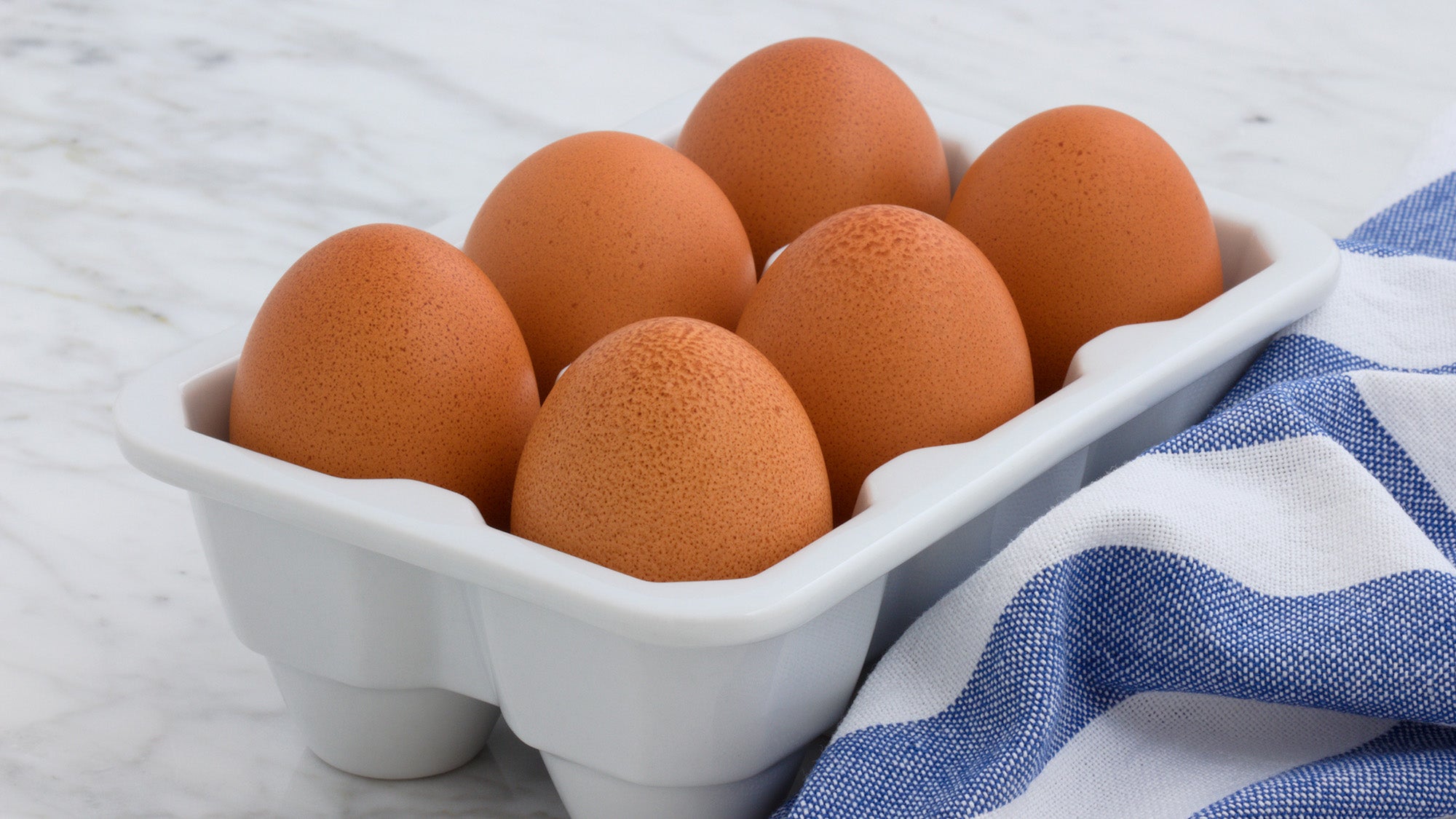Eggs are one of the most practical and efficient foods known to humans and an essential ingredient in cuisines around the world. But due to a series of unfortunate events (and, some say, corporate greed), eggs are now pricey and scarce. It’s enough to make you rethink your love for fluffy omelets at breakfast.
Luckily, many egg replacements are foods you might already have at home. But what you use as a stand-in will depend on what you’re making and the role eggs play in that particular concoction.
To give you first-hand knowledge, we tried different egg replacement options with the same simple vanilla muffin recipe to see which ones work and which ones stink like a rotten egg.
How to choose an egg replacement
Eggs are ubiquitous in kitchens and cookbooks not only because of their high nutritional content, but because they can perform several functions at the same time.
To choose the best replacement for any recipe, Lourdes Castro, a registered dietitian and director of the Food Lab at New York University, says you first need to figure out what the eggs are doing in the food you’re making. For that, a good understanding of how eggs function in food preparation comes in handy.
[Related: We made pancakes with substituted ingredients so you don’t have to]
Keep in mind that eggs are multitaskers and might be playing more than one role in the recipe. In that case, get yourself a replacement that tackles those needs, and don’t be afraid to experiment by adjusting the quantities of the other ingredients if you need to.
Emulsification
Oils don’t mix with water-based liquids—that’s a fact anyone who’s ever tried to make a vinaigrette knows well. So if you’ve ever wondered how milk or vanilla extract mix so well with butter when you’re making cupcakes, the answer is simple: eggs.
This is possible thanks to lecithin, which egg yolks have in abundance, Castro explains. Lecithin molecules have a hydrophilic (water-loving) and a hydrophobic (water-hating, fat-loving) side. This structure gives this nutrient the ability to simultaneously bind to oil and butter, as well as non-fatty substances like milk, making it an excellent emulsifier. If your recipe contains these two conflicting types of ingredients, your eggs are likely serving as an emulsifier.
Binding
Eggs are such great glue that they have been used in the construction of structures that stand tall to this day. And when it comes to edible stuff, eggs are also really, really good at keeping things from falling apart.
Think of meatballs, for example. Cook a clump of ground beef and it’ll crumble. Add some eggs, and the roundness will last until the meat is fully cooked. This is because the high protein content in the eggs acts as glue, keeping everything together even in the presence of destructive heat. Anytime you’re making a quiche or adding seeds as a finishing touch to your buns, you’re using eggs as a binder.
Foaming
The world would be worse off if we didn’t have meringue (and macarons, for that matter). This sugary cloud is only possible thanks to eggs’ ability to grow eight times larger in volume when beaten. Like their binding characteristics, this is due to their high protein content.
When you whisk egg whites, you mix air into them. The stirring motion also creates an elastic web of proteins that traps air bubbles in place, allowing the gooey whites to expand.
“[Eggs are] able to function like a leavening agent, bringing volume and height to a baked good, or whatever it is that you’re making,” says Castro. Egg yolks also have this ability, but because of their high fat content, they can only foam up to a certain degree, she adds. So any time you’re making a fluffy sponge that requires a lot of mixing and beating, eggs are there to add volume.
Color, seal, and finish
Eggwash is the perfect finishing step for a lot of baked goods. If you want your buns shiny and golden, beat some eggs and paint the raw dough with them before you put it in the oven.
The glossy bronze finish is partially due to the Maillard effect: the reaction responsible for the browning of proteins that are exposed to heat. But how dark your baked goods get will depend more on the amount of pigment in the egg yolk.
Testing egg replacements
We chose a simple muffin recipe from The Spruce to test (and taste) replacements. We baked a control batch following the recipe, then repeated the process by using the stand-ins. When they all cooled down, we compared them to assess volume, color, texture, rise, and, of course, flavor.
In this particular recipe, the eggs are mostly there to bring butter and milk together, and for that purpose, our tests showed these egg replacements worked pretty well but were not perfect dupes. Some batches had a slightly different flavor or texture, and others didn’t rise as much as the control group. If you find yourself preparing a similar recipe, you might have to compromise, but you’ll still get tasty treats at the end using any of these replacements.
Aquafaba
- Ratio per egg: 3 tablespoons
- Ideal for: volume and binding
- Overall performance: 🥚🥚🥚🥚🥚
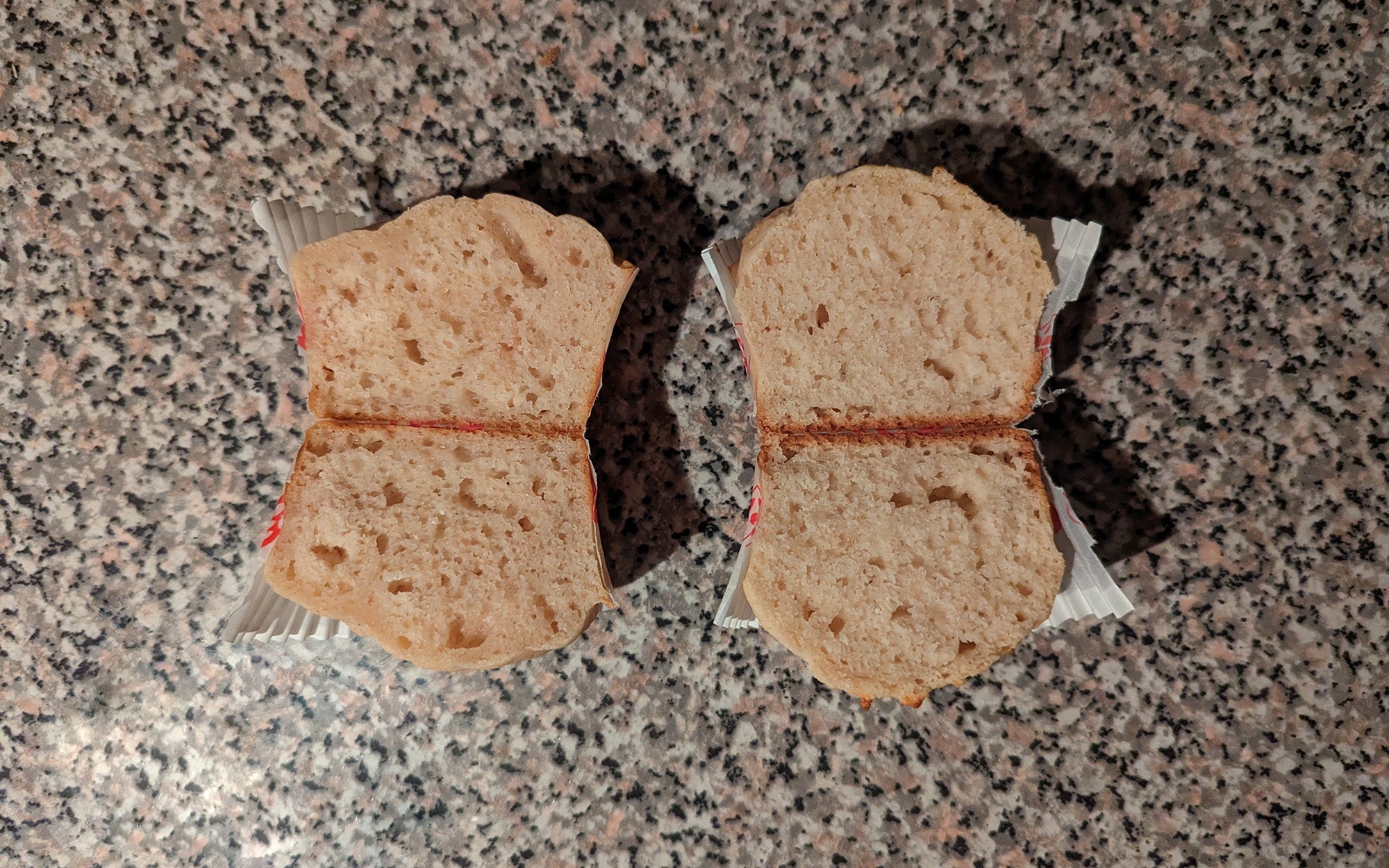
Aquafaba, also known as the water that comes along with canned chickpeas, is a staple in vegan cuisine for a reason. This seemingly innocuous substance is full of protein, and its ability to foam makes it the perfect ingredient to make vegan meringue. This is also what makes it an ideal replacement when you want to add volume to your baked goods. In this experiment, it worked great.
Depending on the chickpeas you get, the aquafaba could be a bit watery; you want it to be thick and resemble an egg-white consistency. You’ll never get a perfect goo like that, but you can get pretty close by reducing the aquafaba in a small saucepan on low heat for 10 to 15 minutes. Castro explains this is an easy way to increase the protein concentration in the liquid, as heat will eliminate the excess water.
We reduced the aquafaba and waited for it to cool down before using it. We also made sure to mix it thoroughly with the rest of the liquid ingredients, beating it by hand for a minute or two. If you have an electric mixer, you might be able to get more volume than we did, but even two minutes of whisking by someone with very questionable upper body strength did the trick perfectly, so you don’t actually need one.
The result was an almost perfect dupe of the control batch. The texture, volume, and flavor were spot on, with the only difference being that the aquafaba muffins were a lot paler than their eggy counterparts. Still, this was one of our favorite replacements, and we ended up with a can of chickpeas we later used to make a delicious salad with onion and feta cheese. Waste not, want not.
Carbonated water
- Ratio per egg: ¼ cup
- Ideal for: volume
- Overall performance: 🥚🥚🥚🥚🥚
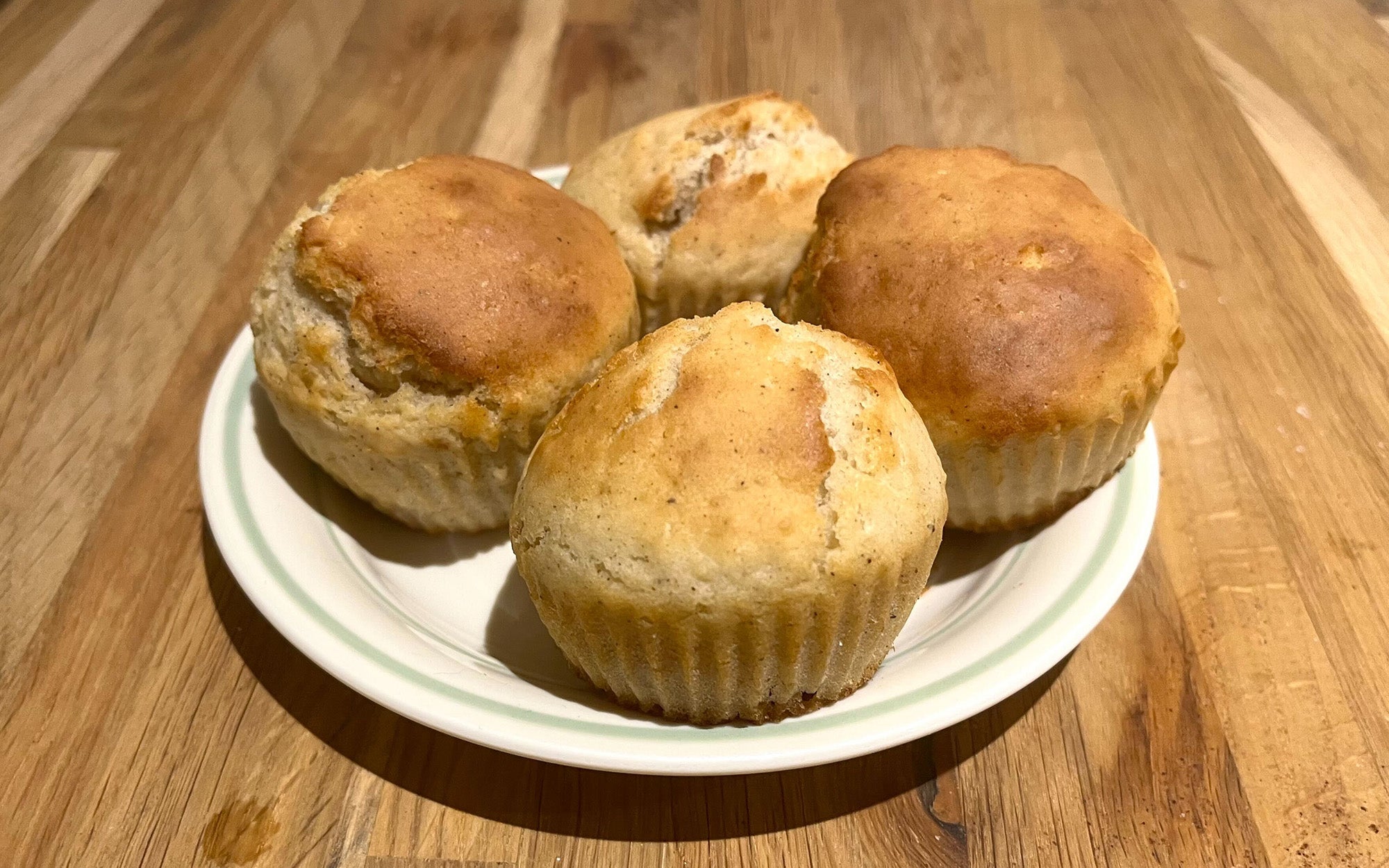
Listen, this one surprised us too. Water is certainly not the same as an egg, but when it comes to baking, the added bubbles in spicy water can provide a similar leavening effect, creating volume for your baked goods. Since water adds no flavor or fat to the batter, you may notice the taste of other ingredients more, so you may want to account for that when using this replacement.
In our case, the batter was about as thick as the control, but not as spoonable—it was a little stickier. Castro says this is normal, and if your batter is too sticky, you can balance that out by adjusting the rest of the ingredients list.
“If you have milk or something else, decrease that to make up for the extra water,” she says.
The finished muffins were actually very close to the control batch, and looked a lot like them. There was no noticeable change in flavor, either.
Fruit puree
- Ratio per egg: ¼ cup (65 grams)
- Ideal for: binding
- Overall performance: 🥚🥚🥚🥚
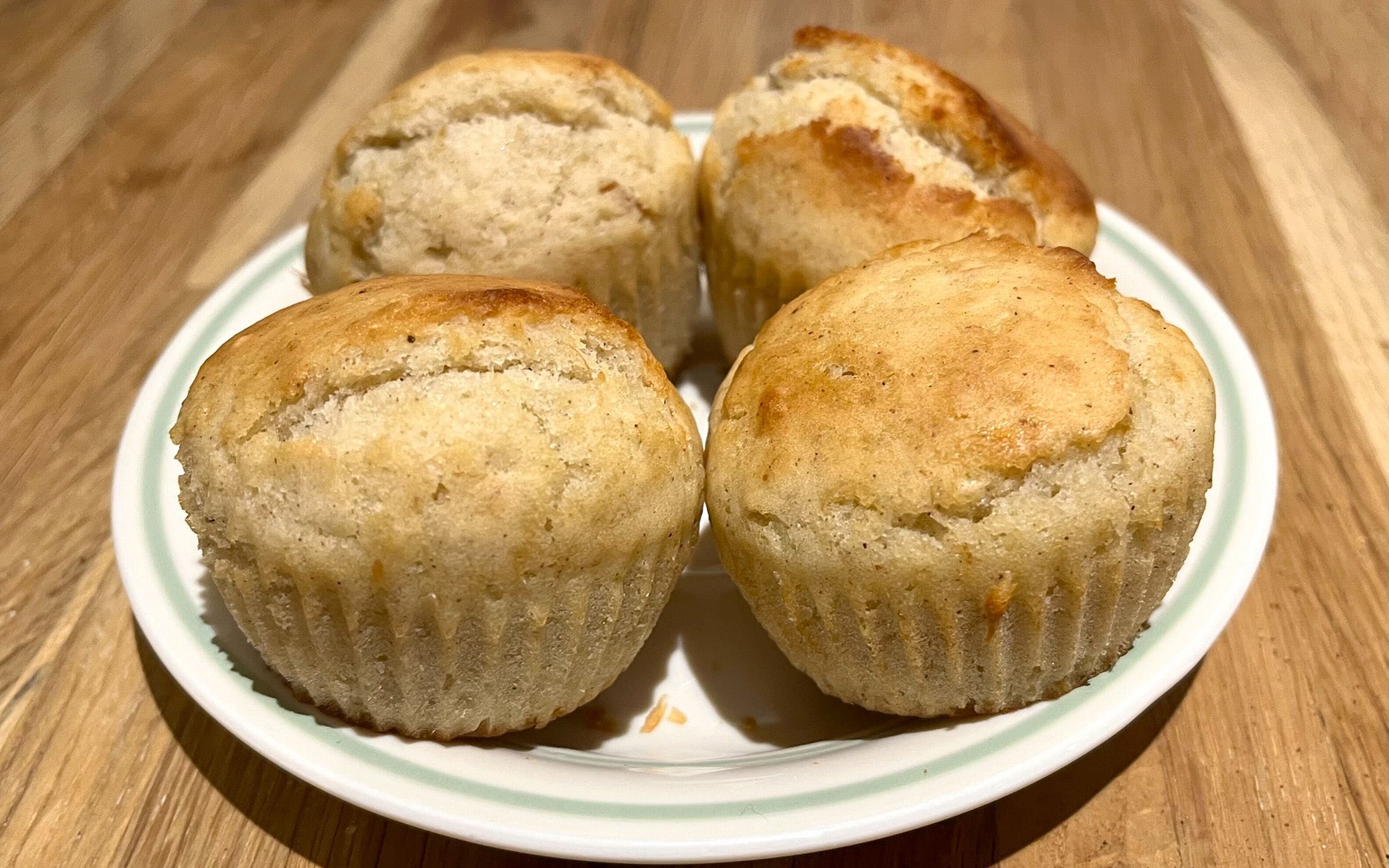
When using fruit as an egg replacement, most sites recommend pureed apples or bananas, but you could technically use any ripened fruit as long as it’s not excessively watery (please don’t try watermelon).
The key ingredient that fruit is adding to your batter is pectin, which a lot of recipes for jams and jellies use as a gelling agent. Simply put, it makes things thicker. In baking, pectin is a pretty good binding agent.
“Bananas are very good at delivering that,” Castro says. “The color is pretty benign, there’s not a lot of seeds, it’s pretty easy to use, and there’s not a lot of water, so it tends to be a good ingredient.”
As easy and accessible as it might be, using fruit as an egg replacement also means the stand-in’s flavor will come through in the finished product. This is not necessarily bad if you like the flavor, but it’s not the best option if you want something more neutral.
We used mashed bananas, which we could faintly taste at the end of the experiment. But the rest of the variables were pretty stable: they looked the same as the control group, and the texture was only slightly denser.
Baking powder and vinegar
- Ratio per egg: 1 teaspoon baking powder + 1 tablespoon vinegar
- Ideal for: volume
- Overall performance: 🥚🥚🥚🥚
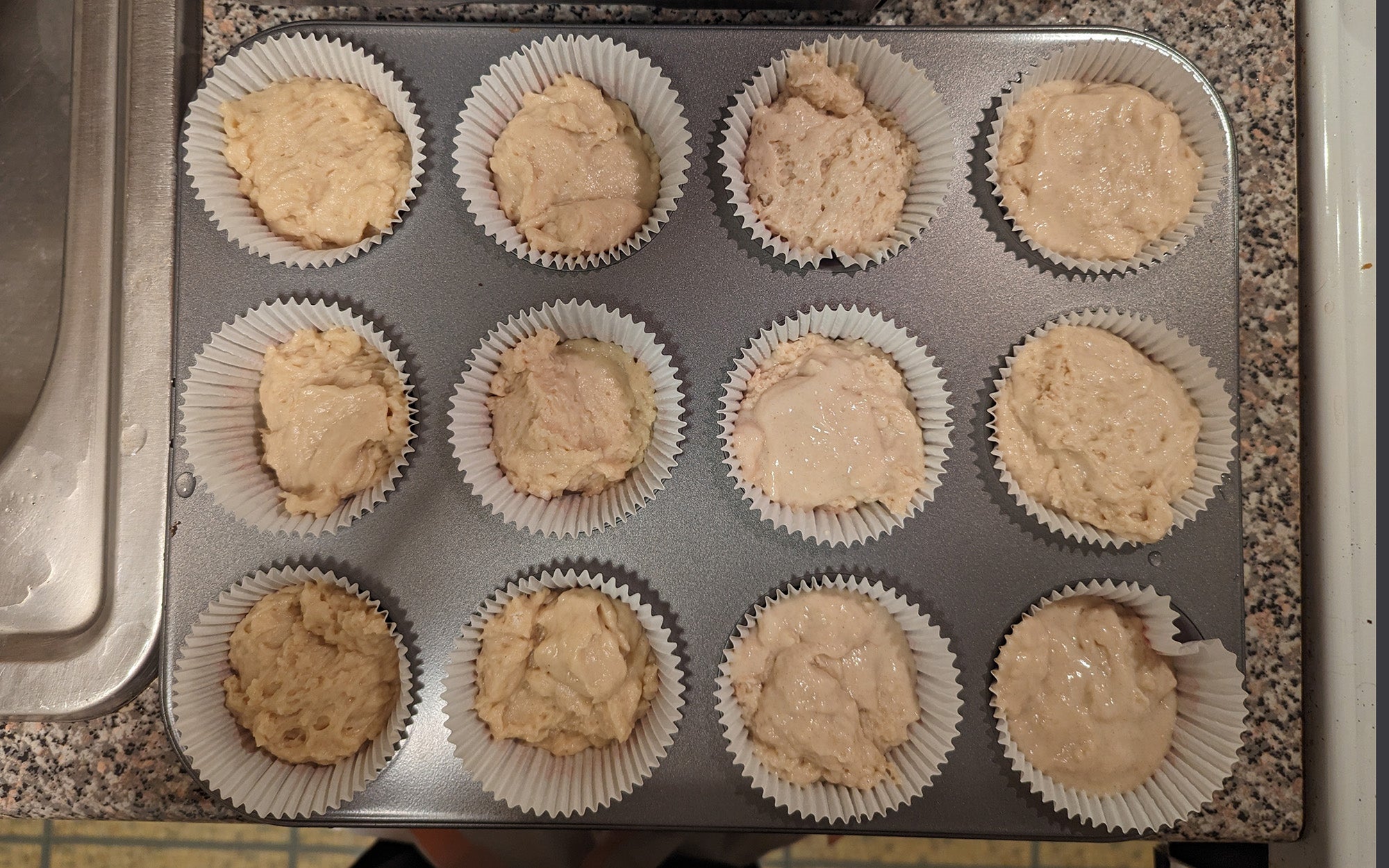
In cooking, the baking powder and vinegar combo is used to add volume. The foaming reaction between these two ingredients produces carbon dioxide, which pushes the batter outward to create height.
Castro explains that this reaction in the oven is sort of a head start to the rise. The CO2 bubbles expand the mix while the gluten coagulates, and if all goes well, they will hold the structure long enough to fix it in place, giving your baked goods size and an airy texture.
You will notice the difference between a muffin with eggs and one using baking powder and vinegar mainly because the latter has no fat, so the texture won’t be as soft. Luckily, our recipe had a healthy amount of butter that counteracted the absence of the egg fat, so the difference was only noticeable against the control batch.
Full-fat, unflavored yogurt
- Ratio per egg: ¼ cup (65 grams)
- Ideal for: binding
- Overall performance: 🥚🥚🥚
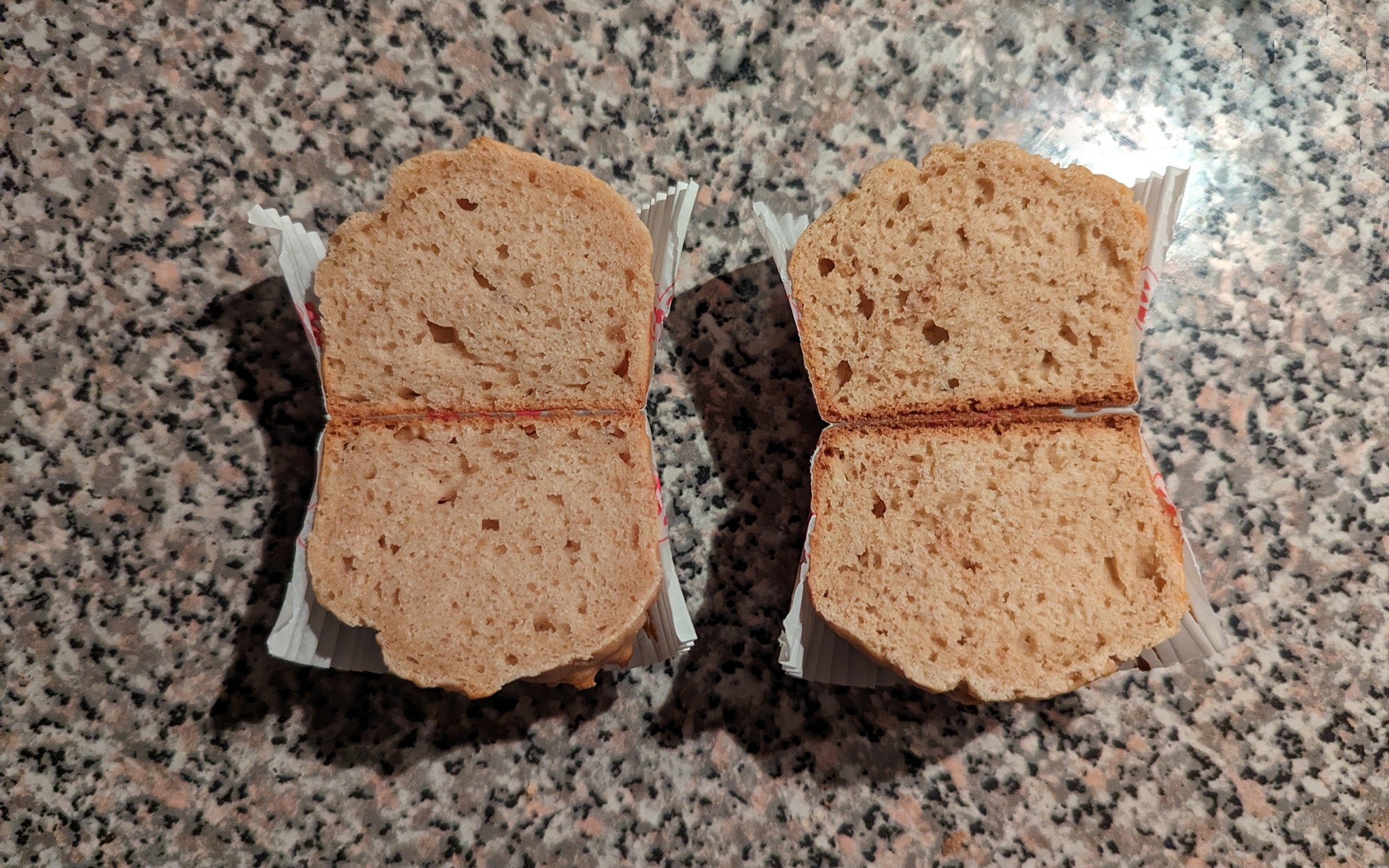
Yogurt has a lot of protein, but it’s different from egg protein because it doesn’t coagulate as easily with heat, Castro explains. This doesn’t make it a good replacement when it comes to binding things together, but in this particular case, the presence of milk changes that.
“Milk does respond to acid, so the yogurt coagulates the milk and then removes a lot of that water,” Castro says. The result is a more concentrated form of protein that was able to keep our muffins from falling apart.
We ended up with soft, pale-ish muffins that didn’t rise as much as the control group, so the crumbs were a bit denser overall. Yogurt also gave the muffins a faint tangy flavor, which counterbalanced the sweetness of the sugar. This could be perfect if this is your kind of thing, but if you like your muffins with a more neutral flavor, you’re better off choosing another replacement.
Chia seeds
- Ratio per egg: 1 tablespoon seeds + 3 tablespoons water
- Ideal for: binding, structure
- Overall performance: 🥚🥚🥚
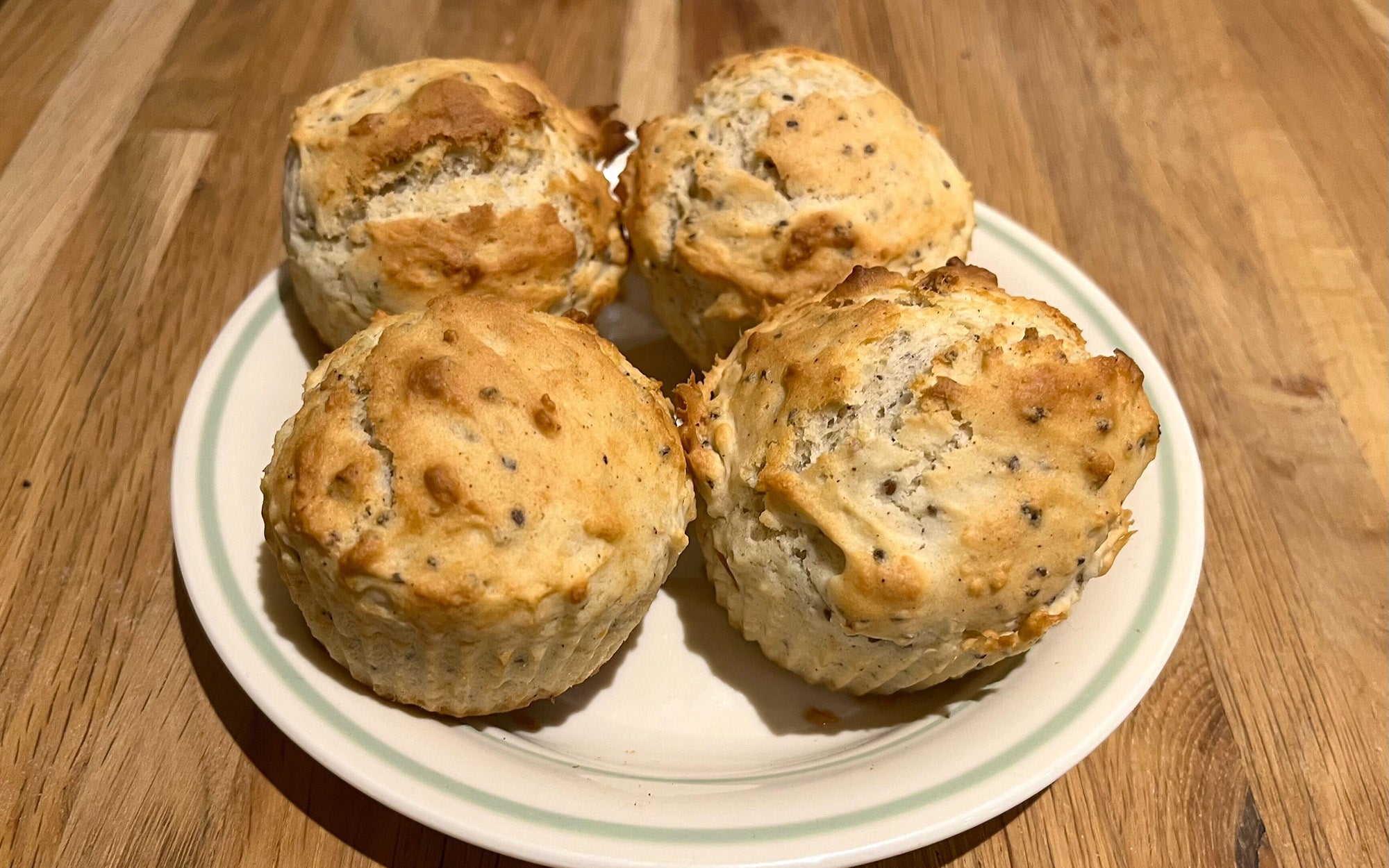
You can use chia or flax seeds to replace eggs, as both grains gel in the presence of moisture. To use it, soak the seeds in water for five minutes before adding them to the batter. You can grind them or use them as-is, the only difference being that using whole seeds will give your baked goods a specific texture you won’t get when using eggs.
Chia and flax seeds have fat and protein, so they’ll provide structure and bind ingredients together. This happens because the seeds take up more space and absorb a lot of the liquid in the batter as they gel.
This was clear to us as the resulting muffins were indeed drier, denser, and visually lumpier than the control group. The chia seeds provided some minor added sweetness, but it was hard to get past the denseness of the muffins themselves. That said, you may be able to adjust or add other ingredients to add moisture if you’re willing to experiment.
When not to use an egg replacement
All of these replacements worked pretty well in making these particular muffins. You may see more pronounced differences in recipes that call for a larger number of eggs or have no other sources of fat or protein. When in doubt, try making a smaller batch of whatever you’re cooking and adjust the ingredients as necessary.
[Related: 5 recipe apps to help organize your meals]
Castro recommends you stay away from replacements if you’re making mayonnaise or hollandaise sauce, as no other ingredients will make up for everything eggs do in those particular foods. Browning and color are two other fronts where replacements won’t do as well, she says. The protein in foods like aquafaba will give you some color and gloss, but you’ll only be able to achieve the bronzed look of a brioche with the golden pigments of an egg yolk.
